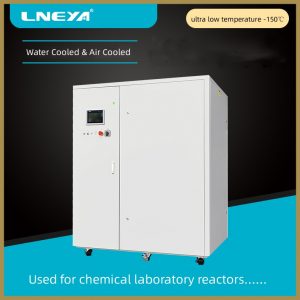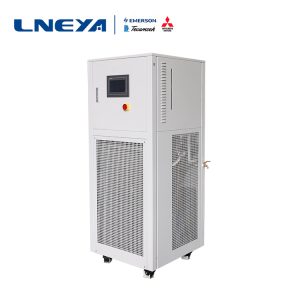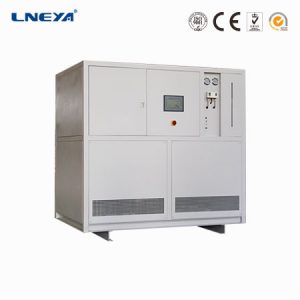Introduction to mixed solution of glycol chilling systems (glycol chillers)
Glycol chillers are industrial refrigeration systems that use a type of antifreeze called glycol, mixed with water, to lower the freezing point in the application of the chilling system.
Glycol is a class of organic compounds that belong to the alcohol family. When mixed with water and pumped through the pipes of a chilling system, glycol serves to slow the rate of freezing. It helps maintain temperature consistency in the application. Some glycol products also work to inhibit corrosion and bacterial growth within the pipes of the chilling system.
Glycol comes in two varieties that should never be mixed together: ethylene glycol and propylene glycol. Both types offer the same relative level of freeze protection. Both also help to guard against corrosion. Some grades of both types of glycol also help to prevent the growth of algae and bacteria within the chiller.
Ethylene glycol is a moderately toxic chemical that has a sweet taste and can be harmful if swallowed. For this reason, it should not be used in potable water or food processing systems when leakage is a possibility. Ethylene glycol has more widespread use due to its lower purchase price. Industrial applications like ice rinks and factories requiring large volumes of the coolant find this to be the most economical choice of glycol.
Mixing Water with Glycol in Your Industrial Refrigeration System
Although you should never mix glycol types there is something that should always be added: water. As mentioned, glycol must be mixed with water to function properly. The type and amount of water to use are key factors to consider.
Ratio of Water to Glycol to Use
Calculating the proper ratio of glycol to water in your chilling system depends on the coldest temperature that the glycol solution will reach during operation. If a chilling system is used indoors where there is no chance of freezing, the amount of glycol needed would be significantly less than required by a glycol chiller used outdoors where temperatures are prone to drop below freezing. Also, if an application requires a very low temperature to operate it should use a glycol mixture similar to that of an outdoor system. In a chilling system, this temperature is normally the saturated suction temperature in the evaporator, and normally this temperature is 10°F below the chiller set point temperature. Using the proper ratio of glycol and water in your chilling system is very important. Adding too much to your chiller system will cause it to become inefficient. However, not enough glycol could cause the system to freeze up, potentially bursting pipes or even rupturing the chiller evaporator.
To learn more about how a グリコールチラー works, contact LNEYA: sales@lneya.com.
関連推奨品
-
The reason why the cooling thermostat Chiller suddenly fails to start
1035If there are any unexpected situations during the use of the cooling thermostat Chiller, it is important to promptly identify the specific reasons before resolving them, in order to effectively address various issues. For example, what is the re...
詳細を見る -
空冷式15P冷凍機と水冷式15P冷凍機の違い
119215P冷凍機を空冷式と水冷式で選定した場合、需要条件が異なるため、どのような違いがありますか?空冷式15P冷凍機は、本体に断熱水槽と水ポンプがあり、水冷式15P冷凍機は、本体に断熱水槽と水ポンプがあり、水冷式15P冷凍機は、本体に断熱水槽と水ポンプがあります。
詳細を見る -
What do the LNEYA chiller fault codes mean? What is the solution?
1608Q: What is the fault code of the chiller? Answer: E1 means extremely high indoor temperature alarm, E2 means extremely high temperature alarm, E3 means extremely low temperature alarm, E4 means indoor temperature controller failure, E5 means water...
詳細を見る -
原子炉冷凍・加熱サーキュレーターの役割とは?選び方は?
1036冷凍・加熱サーキュレーターは、原子炉の精密な温度制御を可能にする装置である。加熱と冷却機能を同時に実現できます。化学反応プロセスで、加熱と冷却を同時に行う必要がある場合に適しています。
詳細を見る
 LNEYA工業用冷凍機 メーカー サプライヤー
LNEYA工業用冷凍機 メーカー サプライヤー














